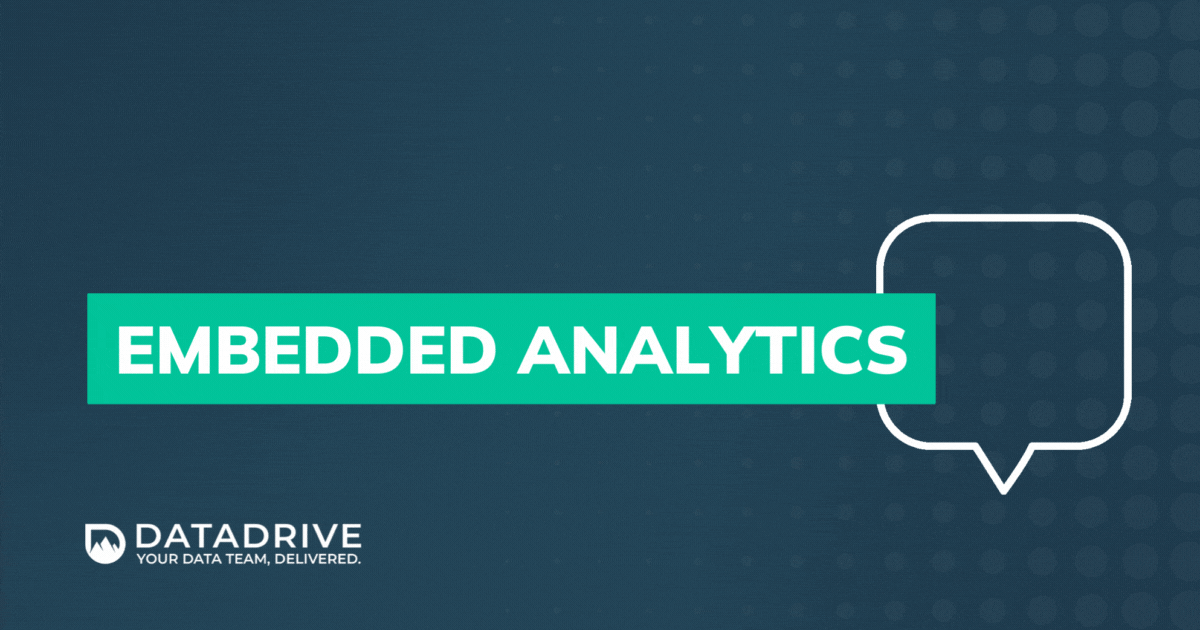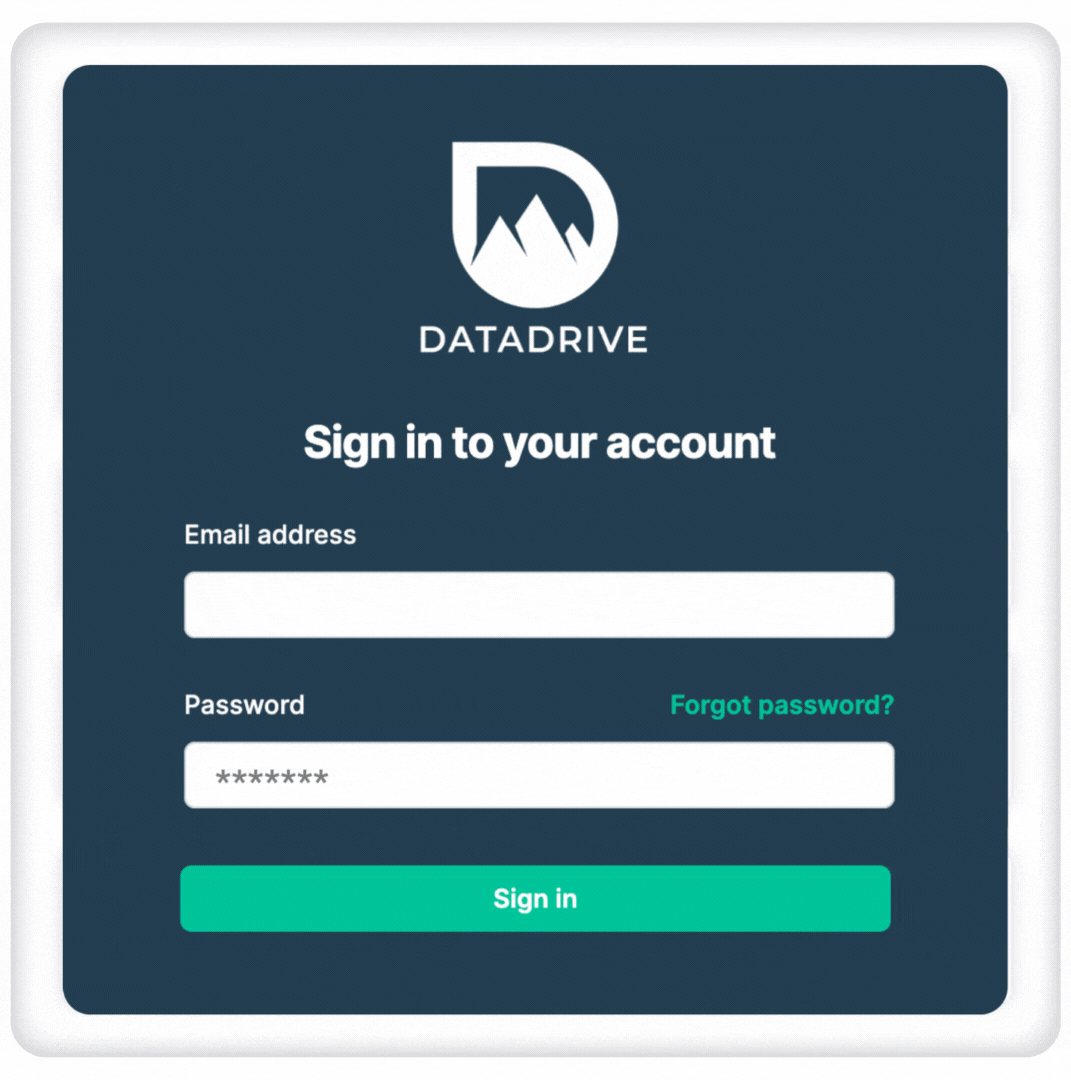Tableau Conference 2025 | Know Before You Go
If you’re a data enthusiast, analytics professional, or just someone curious about Tableau’s latest innovations, the Tableau Conference 2025 is your...
5 min read
 Luke Komiskey
Mar 7, 2024
Luke Komiskey
Mar 7, 2024

Technology has revolutionized how businesses operate, with data being at the forefront of this transformation. The ability to analyze data and extract valuable insights has become a big factor in achieving business success - and customers, vendors, and external partners expect a level of data performance transparency. One of the most impactful developments in the data analytics field is the concept of embedded analytics. This article delves into the intricacies of embedded analytics and data portals, providing an in-depth guide of why it's an important value-added service for any organization.

Embedded analytics is the integration of robust analytical capabilities into existing software applications, workflows, or business processes. It enables users to access, explore, and leverage data without having to switch between separate applications or reporting tools. The primary aim is to provide real-time, data-driven insights within the user's workflow, facilitating more informed and efficient decision-making without the friction of switching to different interfaces.
The concept of embedded analytics is rooted in the broader domain of business intelligence (BI). However, unlike traditional BI, which extracts insight from data outside the application, embedded analytics promotes delivering intelligence back to the applications and websites people use every day. This integration enhances the user experience, making data and analytics easily accessible and promoting a more data-driven approach across the organization.
A crucial component of embedded analytics is the use of data portals. Data portals are web applications or sections of a website that collate data from various sources, categorizing and organizing it for easy access and exploration by the site's users. These portals are designed to facilitate the discovery and utilization of data - creating transparency and collaboration with external audiences beyond traditionally emailed spreadsheet attachments.
Data portals provide a centralized repository for various types of data, including structured and unstructured data such as databases, spreadsheets, text documents, and more into an interactive, visual interface. Data portals offer tools for searching, filtering, and downloading datasets (e.g. XLS, PDF, CSV), enabling users to explore and utilize data for research, analysis, decision-making, communication, and more.
Modern data portals have further enhanced the possibilities of embedded analytics. These portals can be used as private or public-facing applications, allowing end users to explore, interact with, and derive intelligent insights from data to perform tasks or answer questions. This is achieved by setting up underlying connections to data sources (MySQL, Microsoft Access, Snowflake, Databricks, etc.), and leveraging data visualization or embedded analytics tools for easily-consumed yet complex data analyses.
Embedded analytics and data portals offer numerous benefits that can significantly enhance business operations and decision-making:
Increase Revenue: With embedded analytics, organizations can monetize their data by offering access to customers and external users with a curated branded experience. Businesses often use portals to create new revenue streams with a value-added service.
Improved User Experience: By integrating analytics into existing applications, businesses can deliver a more engaging and seamless user experience. Familiar, user-friendly interfaces drive better adoption and user engagement.
Faster Decision-Making: Embedded analytics facilitates real-time decision-making because you are meeting users where they work. Users can access and analyze data within the context of the software application they are already using, allowing for data-driven decisions on the spot.
Enhanced Productivity: Embedded analytics can significantly boost productivity by enabling users to access and work with data within their existing workflows. It eliminates the need to switch between applications, saving time and reducing complexity.
Competitive Advantage: The actionable insights gained from embedded analytics can give businesses a competitive edge and customer-facing offering that leads to upsell opportunities and higher customer retention.
Embedded analytics is used across a wide range of industries and applications. Here are some common use cases:
SaaS Applications: SaaS providers can embed analytics to offer customers tailored dashboards within their platform, allowing users to monitor performance metrics such as user engagement, subscription trends, and feature usage. This not only enhances the customer experience by providing valuable insights but also helps SaaS companies differentiate their offerings and increase user retention.
Media & Marketing Agencies: These agencies can leverage embedded analytics to provide clients with real-time campaign performance dashboards directly within a user-friendly web portal. Clients can track metrics such as reach, engagement, and conversion rates across different channels, ensuring their marketing dollars are spent wisely.
Franchise Operations: Franchise businesses can use embedded analytics within their management systems to offer franchisees access to operational and financial performance metrics, such as sales trends, inventory levels, and customer satisfaction scores. This transparency can help franchisees identify improvement opportunities and benchmark their performance against the network.
Public Services/Sector: Public sector organizations can integrate analytics into their internal systems or public-facing portals to track and report on service delivery metrics, budget allocation, and project progress. This can improve transparency, enhance decision-making, and allow for better resource management and accountability to stakeholders.
Manufacturers: Manufacturers can embed analytics in their ERP (Enterprise Resource Planning) systems to provide real-time visibility into the manufacturing process, including production efficiency, quality control metrics, and supply chain performance. Additionally, external suppliers and vendors will find value in the transparency and ability to forecast demand.

Implementing embedded analytics requires a strategic approach that considers not just the technology but also the people and processes involved. Here are some steps to get you started:
Define Your Business Goals: Identify the business problem you want to solve or the opportunity you want to seize. This will define the direction and scope of your project, particularly around personas and - if applicable - pricing structures to measure success.
Understand Your Data Architecture: Assess your current infrastructure and data stack to ensure your existing applications and databases can support both pulling data from (i.e. API, database, SFTP) and embedding data within (ie. website, application).
Evaluate Technologies: There are many well-established providers, like Tableau, ThoughtSpot, Looker, etc., that make embedding analytics easy. Evaluate your options to ensure the pricing structure of the technology aligns with the use case, users, and usage for your growth.
Consider Security and Governance: Map out who should have access to what data, how access is granted, and what users can do with the data once they gain access. One of the biggest obstacles in external embedded applications is ensuring data security and maintaining proper authentication to sensitive data.
Design Data Product Suite: With the business use case in mind, designing a data product suite that provides ease of use and ease of maintenance is critical. While design iterations are common, first impressions of a new external product release can make or break the ROI of embedded analytics.
In conclusion, embedded analytics is a powerful tool that can transform business operations, improve decision-making, and drive business growth. By integrating analytics directly into existing applications and workflows, it not only enhances user experience but also opens up opportunities for data monetization. With the right approach and technology, businesses can harness the full potential of their data and stay ahead of the competition.
DataDrive, a leading provider of managed data portals, offers organizations a secure embedded analytics experience. By exposing insights to customers, vendors, and communities, DataDrive empowers users with a holistic view to insights, facilitating informed decision-making. With its user-friendly interface and advanced functionality, DataDrive's managed data portals make data-driven insights more accessible, efficient, and impactful for your community.
-2.gif)
If you’re a data enthusiast, analytics professional, or just someone curious about Tableau’s latest innovations, the Tableau Conference 2025 is your...

Tableau Plus is the new premium offering from Tableau, a leading data visualization and business intelligence platform. It builds upon the...

If you've spent any time working with Tableau, you've likely encountered the dreaded "Cannot Mix Aggregate and Non-Aggregate Arguments" error. It's a...